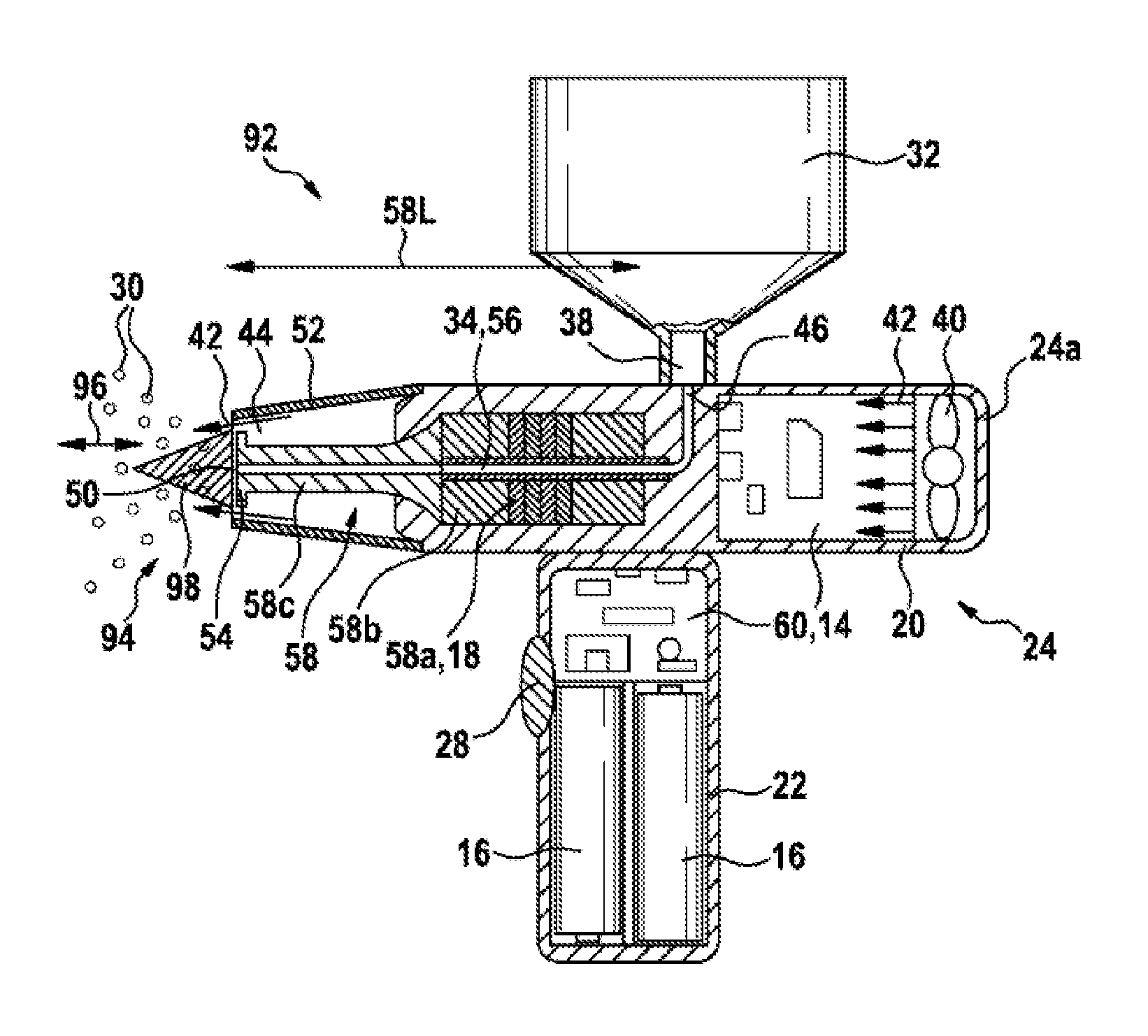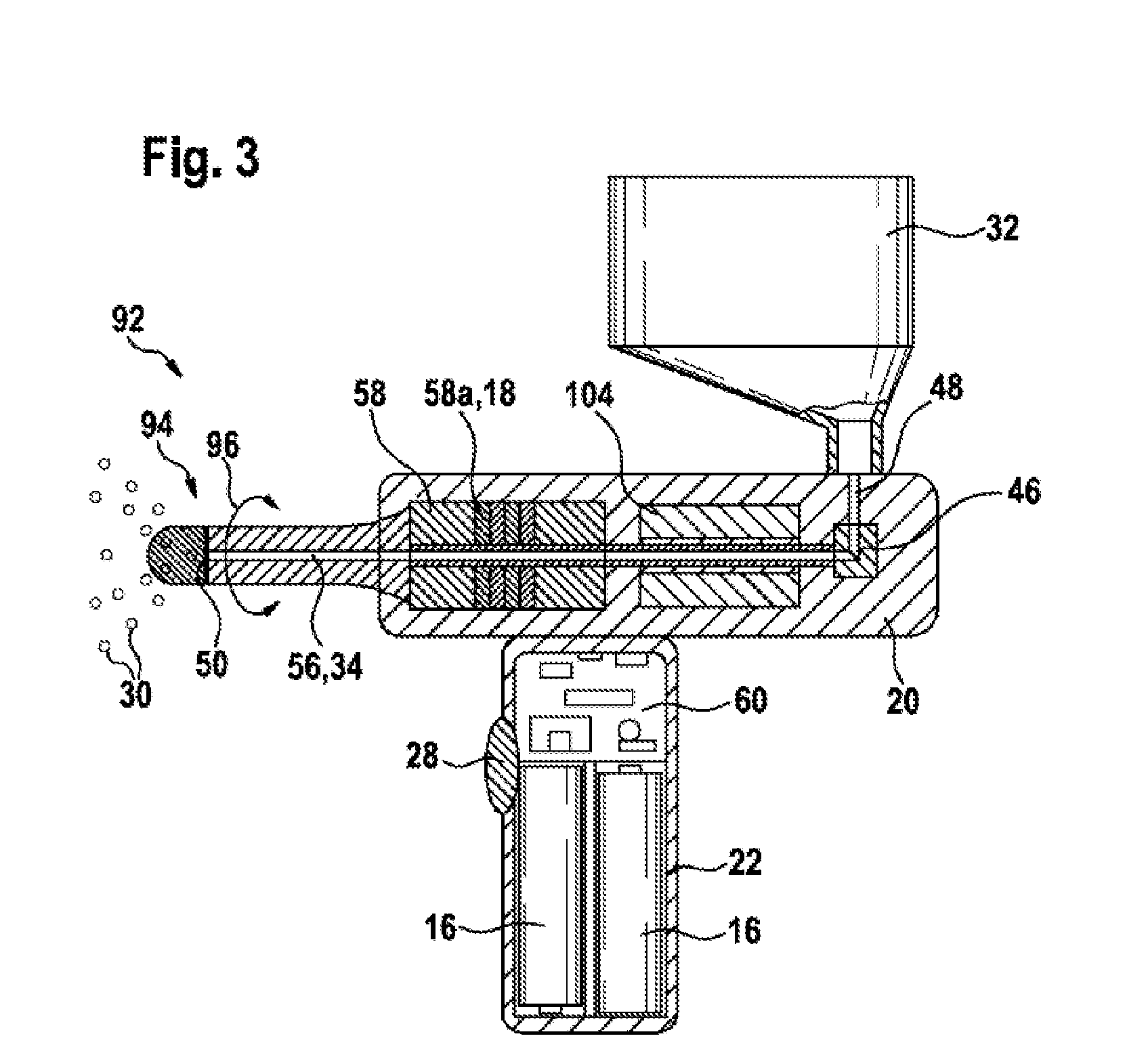Minimal Quantity Lubricating System
a lubricating system and small quantity technology, applied in the field of small quantity lubricating system, can solve the problems of high stress on the tool, heating or destruction of the tool, etc., and achieve the effect of reducing the overall size of the excitation component, high oscillation amplitude, and efficient droplet generation
- Summary
- Abstract
- Description
- Claims
- Application Information
AI Technical Summary
Benefits of technology
Problems solved by technology
Method used
Image
Examples
Embodiment Construction
[0030]Like or similar components are denoted by like reference signs in the figures.
[0031]FIGS. 1 and 2 illustrate minimal quantity lubricating systems known from the prior art for cooling and / or lubricating a drilling tool 98 of a bench drill 90. A self-sufficient minimal quantity lubricating system 10 is illustrated in FIG. 1 and dispenses a cooling fluid at the drilling site of the working region 94 of a bench drill 90. The lubricating system 10 can be provided in a versatile manner on different machine tools 90 to cool and / or lubricate. Atomization occurs by means of compressed air, which is generated by an external compressor and is coupled into the atomizer nozzle. FIGS. 2a and 2b show basic illustrations of outer and inner minimal quantity lubrication respectively. Whereas the fluid is atomized in FIG. 2a at the working region 94 of the tool through an external nozzle 50, wherein the fluid 30 is supplied by means of a fluid duct 56, in FIG. 2b the lubricating fluid is supplie...
PUM
 Login to View More
Login to View More Abstract
Description
Claims
Application Information
 Login to View More
Login to View More - R&D
- Intellectual Property
- Life Sciences
- Materials
- Tech Scout
- Unparalleled Data Quality
- Higher Quality Content
- 60% Fewer Hallucinations
Browse by: Latest US Patents, China's latest patents, Technical Efficacy Thesaurus, Application Domain, Technology Topic, Popular Technical Reports.
© 2025 PatSnap. All rights reserved.Legal|Privacy policy|Modern Slavery Act Transparency Statement|Sitemap|About US| Contact US: help@patsnap.com



